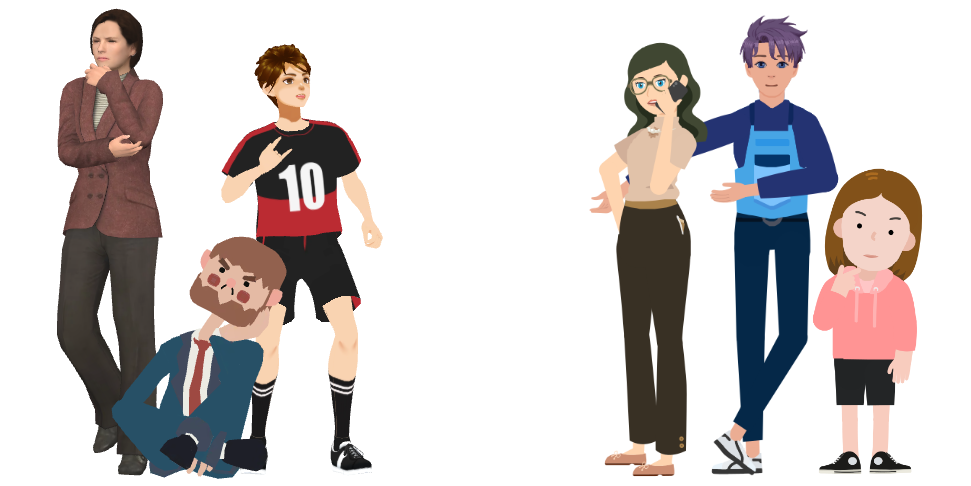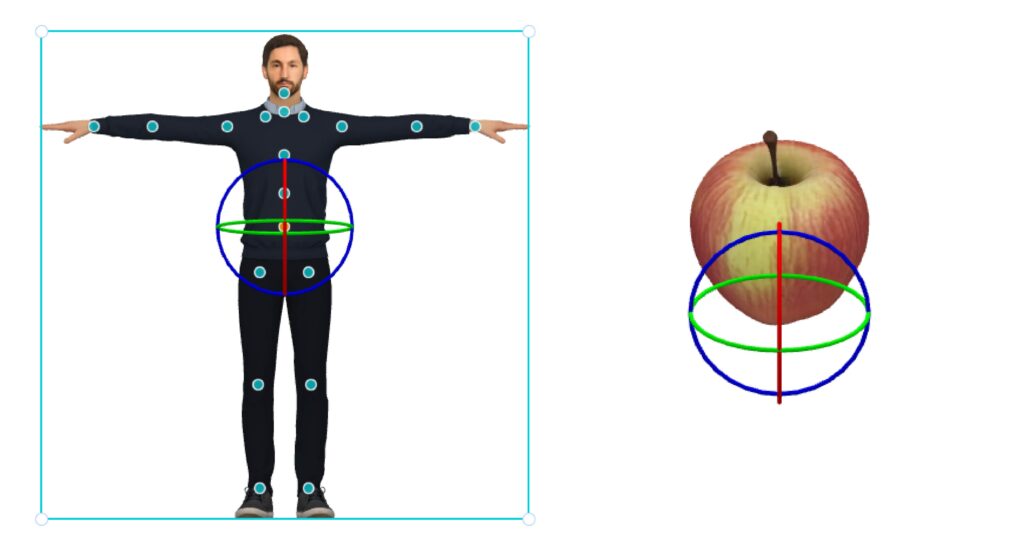The Rising Popularity of 3D: Exploring its Development and Usage
12 Jul
With the rapid development of 3D technology, the quality of 3D graphics has significantly improved, leading to its widespread use in various fields such as gaming, TV animation, virtual avatars, and more. In this article, we’ll delve into the growing popularity of 3D, and the advantages and disadvantages of 3D versus 2D animation. We will also introduce the 3D characters and props available in AniFuzion, and how they can enhance both animations and still designs.
The Development of 3D Technology
The journey of 3D technology has been remarkable, marked by significant milestones and advancements. In the early days, 3D graphics were relatively simple and used primarily in research and industrial applications. However, with the advent of more powerful computers and advanced software, the capabilities of 3D technology have expanded dramatically. Some notable examples of this development include:
- Toy Story (1995): Pixar‘s “Toy Story” was the first feature-length film entirely created using 3D animation. It set a new standard for animated films and showcased the potential of 3D graphics in storytelling.
- Avatar (2009): James Cameron’s “Avatar” revolutionized the film industry with its groundbreaking use of 3D technology, creating immersive and realistic environments that captivated audiences worldwide.
- Modern Video Games: Today’s video games utilize advanced 3D graphics to create incredibly detailed and lifelike worlds, offering players an unparalleled gaming experience.
Current Uses of 3D Technology

3D technology is now ubiquitous, with applications spanning various industries:
- Gaming: 3D graphics are fundamental in creating immersive and interactive gaming environments. The realism and detail provided by 3D enhance the overall gaming experience.
- Film and TV Animation: 3D animation allows for the creation of visually stunning and complex scenes that would be difficult or impossible to achieve with traditional 2D animation.
- Virtual Reality (VR) and Augmented Reality (AR): 3D technology is the backbone of VR and AR applications, providing realistic and engaging experiences for users.
- Virtual Avatars: In social media, virtual meetings, and other online interactions, 3D avatars are increasingly used to represent users, offering a more personalized and expressive way to communicate.
The widespread use of 3D technology has fueled further development, leading to even more sophisticated tools and techniques that continue to push the boundaries of what is possible.
3D Characters vs. 2D Characters in Animation

3D
Pros
- Realism: 3D characters can achieve a high level of realism, making them ideal for creating lifelike scenes and detailed expressions.
- Versatility: They can be manipulated in three dimensions, allowing for more dynamic and complex animations.
- Consistency: Once a 3D model is created, it can be reused and adapted for different scenes without losing quality.
Cons
- Complexity: Creating and animating 3D characters requires more advanced skills and resources compared to 2D.
- Rendering Time: 3D animations can take longer to render, especially for high-quality and detailed scenes.
2D
Pros
- Simplicity: Easier to create and animate, making them accessible for beginners and smaller projects.
- Artistic Flexibility: Allows for a wide range of artistic styles and expressions.
- Faster Production: Generally quicker to produce and render compared to 3D.
Cons
- Limited Depth: 2D characters lack the depth and realism of 3D characters.
- Consistency Issues: Maintaining consistency in appearance and movement can be challenging across different scenes.
3D Characters and Props in AniFuzion
AniFuzion provides a range of 3D characters and props to enhance your animations:

3D Characters
- Actions and Poses: You can add various actions and poses to 3D characters, making them move naturally and expressively.
- Lip Sync: The lip sync feature ensures that characters’ mouth movements match the speech generated by the text-to-speech feature, creating realistic dialogue.
Learn more: Exploring the Power of Text-to-Speech in AniFuzion
3D Props
- Rotation and Orientation: 3D props can be rotated to any orientation, allowing for precise placement and interaction within scenes.
- Animation: You can apply animations to 3D props, such as entrance and exit animations, adding dynamic elements to your scenes.
Using 3D Elements for Still Designs
Using 3D elements in AniFuzion, part of the Animated Explainer suite, is not limited to animations alone; they are equally valuable for creating high-quality still designs. The ability to rotate and position 3D characters and props in any direction offers unmatched flexibility and creativity. This feature eliminates the limitations of traditional 2D resources and allows you to craft the exact orientation you need for your design. With high-quality 3D elements, you can explore and unleash more potential in your creative projects, making them stand out with professionalism and visual appeal.
The advancements in 3D technology have revolutionized various industries, making 3D more popular and widely used than ever before. Whether you’re creating animations or still designs, the 3D characters and props in AniFuzion provide you with powerful tools to bring your ideas to life. Explore the endless possibilities of 3D and elevate your creative projects to new heights with AniFuzion.



